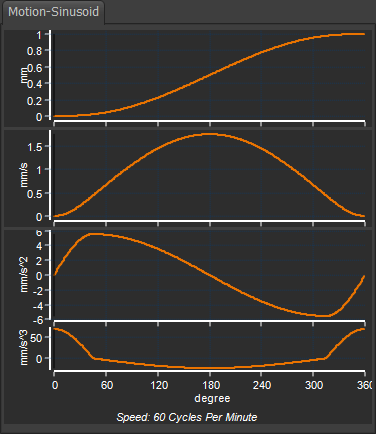The Modified Sinusoid motion-law has finite jerk throughout the segment.
It has an relatively low peak velocity, but a relatively high value of the nominal acceleration.
Dynamic Performance
This Motion-Law is a good general purpose type particularly in applications where the period ratio is between 5 and 10, particularly if the input drive is flexible or it has backlash. It performs well with respect to residual vibration after the segment is complete.
Pressure Angle Considerations
This one of the Traditional Motion-Laws that produce a relatively small pressure angle, and so a small cam for a given lift and pre-prescribed maximum pressure angle.
Drive Torques
The nominal drive torque characteristics and the actual torque values are low even for low values of Period Ratio are good for this motion-law. The low peak values and the smooth variation of drive torque during the motion-law further emphasize the suitability of this motion-law where the input drive is flexible or has backlash.
|
